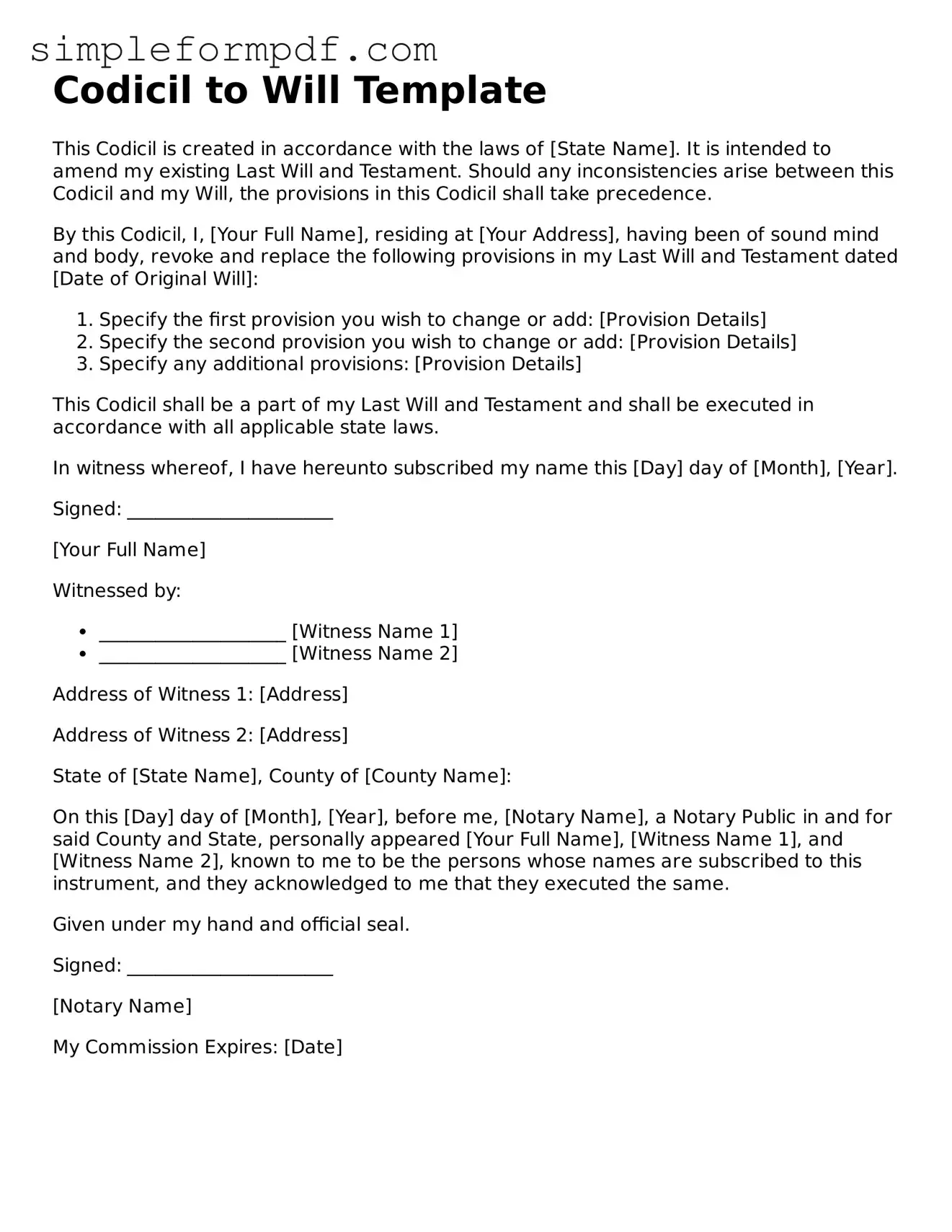Codicil to Will Template
This Codicil is created in accordance with the laws of [State Name]. It is intended to amend my existing Last Will and Testament. Should any inconsistencies arise between this Codicil and my Will, the provisions in this Codicil shall take precedence.
By this Codicil, I, [Your Full Name], residing at [Your Address], having been of sound mind and body, revoke and replace the following provisions in my Last Will and Testament dated [Date of Original Will]:
- Specify the first provision you wish to change or add: [Provision Details]
- Specify the second provision you wish to change or add: [Provision Details]
- Specify any additional provisions: [Provision Details]
This Codicil shall be a part of my Last Will and Testament and shall be executed in accordance with all applicable state laws.
In witness whereof, I have hereunto subscribed my name this [Day] day of [Month], [Year].
Signed: ______________________
[Your Full Name]
Witnessed by:
- ____________________ [Witness Name 1]
- ____________________ [Witness Name 2]
Address of Witness 1: [Address]
Address of Witness 2: [Address]
State of [State Name], County of [County Name]:
On this [Day] day of [Month], [Year], before me, [Notary Name], a Notary Public in and for said County and State, personally appeared [Your Full Name], [Witness Name 1], and [Witness Name 2], known to me to be the persons whose names are subscribed to this instrument, and they acknowledged to me that they executed the same.
Given under my hand and official seal.
Signed: ______________________
[Notary Name]
My Commission Expires: [Date]
